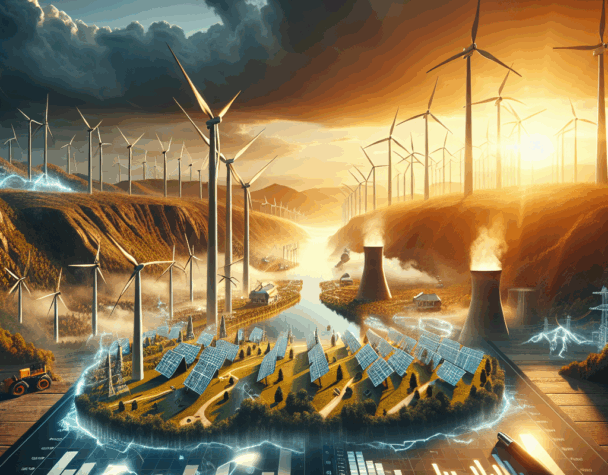
Global Clean Energy Investments Surge to $2.2 Trillion in 2025, Doubling Fossil Fuel Funding
Fri, June 13, 2025Global Clean Energy Investments Surge to $2.2 Trillion in 2025, Doubling Fossil Fuel Funding
In a significant shift towards sustainable energy, global investments in clean technologies are projected to reach $2.2 trillion in 2025, effectively doubling the funds allocated to fossil fuels. This trend underscores a growing commitment to renewable energy sources and a move away from traditional coal, gas, and oil investments.
Investment Breakdown
The International Energy Agency (IEA) reports that the $2.2 trillion investment encompasses various sectors within the clean energy domain, including:
- Renewables: Solar, wind, and hydroelectric projects continue to attract substantial funding.
- Energy Storage: Advancements in battery technologies and other storage solutions are critical for managing renewable energy supply.
- Nuclear Energy: Modern nuclear projects are receiving renewed interest as a low-carbon energy source.
- Grid Technologies: Upgrades and expansions of electrical grids are essential to accommodate the influx of renewable energy.
These investments are now significantly outpacing those in fossil fuels, marking a pivotal moment in the global energy landscape.
Regional Dynamics
While the global trend leans towards clean energy, regional variations persist. Countries like China and India continue to experience rising demand for traditional energy sources, including coal, oil, and gas. This demand is driven by rapid industrialization and economic growth in these regions.
Conversely, fossil fuel-importing nations are increasingly focusing on domestic energy sources. This shift is influenced by global trade uncertainties and a trend towards deglobalization. Notably, some analyses suggest that protectionist and isolationist policies, such as those previously advocated by former U.S. President Donald Trump, may inadvertently accelerate the adoption of clean energy as countries seek to reduce reliance on imported fuels.
Policy Implications
In the United States, proposed amendments to the Inflation Reduction Act (IRA) could potentially reduce projected renewable energy capacity by 10% by 2035. Such policy changes highlight the delicate balance between legislative actions and investment trends in the energy sector.
Infrastructure Demands
The rapidly expanding energy needs of data centers present additional challenges and opportunities. Meeting these demands may require over $170 billion in new power generation investments, further driving both clean and fossil fuel spending. This underscores the importance of strategic planning in energy infrastructure to support technological advancements.
Financial Landscape
Despite recent setbacks in green finance, existing projects continue to receive substantial funding. However, new approvals face uncertainty due to evolving fiscal and political landscapes. Investors and policymakers must navigate these complexities to sustain momentum in the clean energy transition.
For more detailed insights, refer to the original report by the International Energy Agency.
As the world grapples with climate change and seeks sustainable solutions, the surge in clean energy investments represents a hopeful trajectory towards a greener future.

